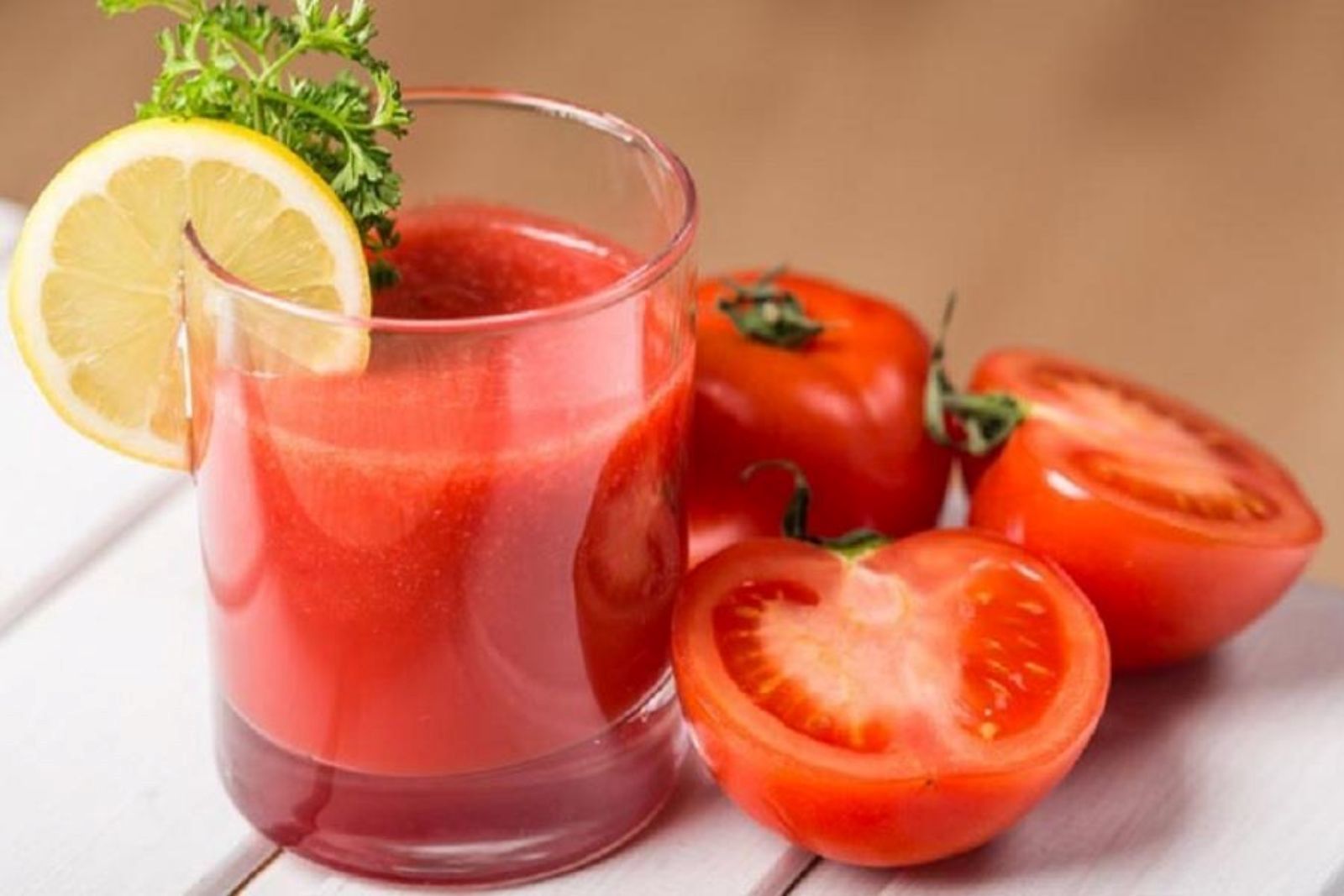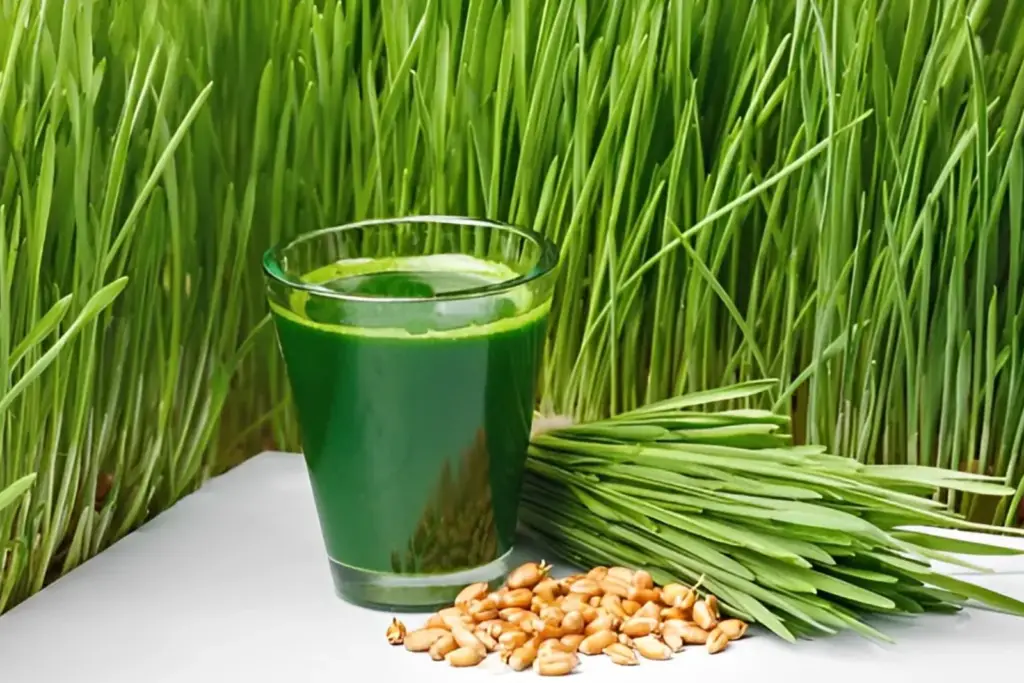
Fresh tomato juice is a refreshing and nutritious beverage that can be enjoyed on its own or used as a base for cocktails and recipes. Made from ripe, juicy tomatoes, this vibrant drink is bursting with natural sweetness and tanginess. If you find yourself with an abundance of tomatoes or want to preserve their flavor for later use, freezing fresh tomato juice is an excellent option. Freezing allows you to extend the shelf life of the juice while retaining its freshness and vibrant taste, ensuring that you can enjoy the goodness of tomatoes all year round. In this guide, we will explore the best techniques for freezing fresh tomato juice, so you can conveniently enjoy its deliciousness whenever you desire.
Here is a step-by-step guide on how to freeze tomato juice:
Step 1: Prepare the tomato juice
To begin the process of freezing tomato juice, you’ll need to either make your own fresh tomato juice or acquire pre-made tomato juice. Making your own tomato juice allows you to have control over the quality and flavor, while store-bought options provide convenience.
If you choose to make your own tomato juice, start by selecting ripe tomatoes. Look for tomatoes that are firm and have a vibrant color. You can use a variety of tomato types, such as Roma, beefsteak, or vine-ripened tomatoes, depending on your preference.
Wash the tomatoes thoroughly under cool running water to remove any dirt or impurities. Afterward, remove the stems and cut them into smaller pieces to make them easier to work with.
There are a few methods you can use to turn the tomatoes into juice. One common method is to use a blender. Place the tomato pieces in a blender and blend until smooth. To achieve a smoother consistency, it’s recommended to strain the juice to remove any pulp or seeds. You can do this by pouring the blended tomato mixture through a fine-mesh sieve or cheesecloth, and pressing down with a spoon to extract as much juice as possible.
Alternatively, you can also use a juicer specifically designed for extracting juice from fruits and vegetables. Follow the manufacturer’s instructions for juicing tomatoes and collect the juice in a container.
Whether you make your own tomato juice or use store-bought, the key is to ensure that the juice is strained to remove any pulp or seeds. This step helps to achieve a smooth consistency and prevents any unwanted texture when you later use tomato juice in recipes.
Should I strain the tomato juice before freezing it?
Yes, it is recommended to strain the tomato juice before freezing it. Straining helps remove any pulp, seeds, or solids, resulting in a smoother texture and consistency of the juice. This ensures a better freezing and thawing process, as well as a more versatile tomato juice that can be easily incorporated into various recipes without any unwanted texture or bits.
Step 2: Choose the appropriate containers
When it comes to freezing tomato juice, selecting the right containers is crucial for maintaining its quality and preventing freezer burn. Freezer-safe containers or resealable freezer bags are specifically designed to withstand the low temperatures of the freezer and keep the contents fresh.
Using containers that are not suitable for freezing can lead to freezer burn, which occurs when moisture evaporates from the food and forms ice crystals on its surface. Freezer burn can negatively affect the texture, flavor, and overall quality of the tomato juice.
Here are a few factors to consider when choosing the appropriate containers for freezing tomato juice:
- Freezer-safe material: Opt for containers made from materials that are safe for freezing, such as rigid plastic, or high-density polyethylene (HDPE). These materials are less likely to crack or become brittle in the freezer.
- Airtight seal: Ensure the containers have a tight and secure seal to prevent air from entering and moisture from escaping. This helps maintain the freshness and flavor of the tomato juice while also preventing freezer odors from seeping in.
- Appropriate size: Select containers that can accommodate the portion sizes you desire. It’s a good idea to divide the tomato juice into smaller portions that match your recipe requirements. This allows you to thaw only the amount you need, reducing waste and ensuring the rest of the juice remains frozen.
- Resealable freezer bags: If you prefer to use freezer bags, choose those specifically designed for freezing. Look for bags with a strong zipper seal that can withstand freezing temperatures without leaking. Ensure that the bags are thick and durable to provide adequate protection for the tomato juice.
Can I freeze tomato juice in glass containers?
Yes, you can freeze tomato juice in glass containers, but it’s important to take some precautions. Ensure that the glass containers you use are specifically designed for freezing, as not all glass containers are freezer-safe and may crack or shatter due to the expansion of liquid during freezing. Leave sufficient headspace in the glass containers to accommodate expansion and seal them tightly to prevent air exposure and freezer burn.
Can I freeze tomato juice in plastic bags?
Yes, you can freeze tomato juice in plastic bags. It’s recommended to use resealable freezer bags made of thick, durable plastic that are specifically designed for freezing. Pour the tomato juice into the bags, remove as much air as possible before sealing, and lay them flat in the freezer to maximize space and allow for quicker thawing when needed. Just make sure the bags are securely sealed to prevent leaks or spills.
Step 3: Portion the tomato juice
When freezing tomato juice, it’s beneficial to portion it into convenient sizes that align with your future recipe needs. Dividing the tomato juice into smaller portions offers flexibility and allows you to thaw only the amount you require, eliminating the need to defrost the entire batch.
Here are a few reasons why portioning the tomato juice is a good practice:
- Easy measurement: Portioning the tomato juice into smaller sizes makes it simpler to measure the exact amount needed for a recipe. This can be particularly useful when following recipes with specific measurements or when adjusting the flavor profile according to personal preference.
- Reduced waste: By freezing tomato juice in portioned sizes, you minimize the risk of wasting unused portions. Thawing and refreezing the entire batch repeatedly can degrade the quality of the juice over time. Portioned sizes allow you to thaw only what you need, preserving the remaining frozen portions for future use.
- Convenient storage: Smaller portions take up less space in the freezer, making it easier to organize and maximize freezer storage capacity. It allows you to stack or store the portions in an efficient manner, saving valuable freezer space for other items.
To portion the tomato juice, consider the average quantity you typically use in your recipes or the portion sizes suggested by the recipes you frequently cook. You can use ice cube trays, small containers, or freezer-safe bags depending on your preference.
If using ice cube trays, pour the tomato juice into the compartments and freeze until solid. Once frozen, transfer the tomato juice cubes into labeled freezer bags, ensuring they are sealed tightly to prevent freezer burn.
For small containers, fill them with the desired amount of tomato juice, leaving a little space at the top to account for expansion during freezing. Seal the containers securely and label them with the date of freezing. If using freezer bags, pour the tomato juice into the bags and squeeze out any excess air before sealing them tightly. Label the bags with the date of freezing and the portion size for easy identification later.
Step 4: Fill the containers
After portioning the tomato juice, the next step is to fill the chosen containers with the juice. However, it’s important to leave some space at the top of the containers to allow for expansion during the freezing process. This extra space, known as headspace, is crucial to prevent the containers from cracking or bursting.
Here’s why leaving headspace is necessary when filling the containers with tomato juice:
- Expansion during freezing: Liquids, including tomato juice, expand as they freeze due to the formation of ice crystals. If the containers are filled to the brim, the expanding juice has no room to accommodate the increased volume, leading to excessive pressure within the container. This pressure can cause the container to crack or burst, resulting in leaks or potential damage to other items in the freezer.
- Preservation of quality: Leaving headspace allows the tomato juice to freeze evenly and maintain its quality. When the juice expands, it needs room to do so without being constrained by the container’s walls. By leaving adequate headspace, you promote proper freezing and minimize the risk of the juice being compromised in texture or flavor.
To determine the appropriate amount of headspace when filling the containers with tomato juice, it’s generally recommended to leave about half an inch (1.3 cm) of space at the top. However, it’s always a good idea to consult the specific guidelines provided by the manufacturer of your containers or bags.
When pouring the tomato juice into the containers, do so carefully to avoid spills or drips along the edges. Wipe any excess juice from the container rims to ensure a proper seal. This helps maintain the integrity of the container and prevents potential freezer burn or moisture intrusion.
Step 5: Seal and label the containers
Once you have filled the containers with tomato juice, the next step is to seal them securely to maintain the quality of the juice during freezing. Additionally, labeling each container with the date of freezing is essential for keeping track of the storage time and ensuring an organized freezer.
Here’s why sealing and labeling the containers is important:
- Preservation of quality: Properly sealing the containers or freezer bags prevents air from entering and moisture from escaping. This helps maintain the freshness, flavor, and texture of the tomato juice during freezing. A secure seal also protects the juice from exposure to odors in the freezer, which could affect its taste.
- Prevention of freezer burn: When tomato juice is exposed to air in the freezer, it can lead to freezer burn. Freezer burn occurs when moisture evaporates from the juice, resulting in dry spots and potential degradation in quality. By sealing the containers tightly, you minimize the chances of freezer burn and ensure that the tomato juice retains its optimal taste and texture.
- Organization and tracking: Labeling each container with the date of freezing allows you to keep track of the storage time. Tomato juice is best when consumed within a certain period, and labeling helps you know when the frozen juice should be used by. This practice lets you maintain an organized freezer, easily identify the contents, and prioritize using older frozen tomato juice first.
To seal the containers, ensure that lids or caps are tightly secured, and for freezer bags, close them using the provided zipper or press out as much air as possible before sealing. Check for any leaks or openings to prevent the tomato juice from coming into contact with freezer air.
Using a permanent marker, label each container or bag with the date of freezing. You can also include additional information, such as the portion size or any specific notes you find helpful. Clear and visible labeling makes it easier to identify and retrieve the desired container when you need the frozen tomato juice later.
Step 6: Freeze the tomato juice
After sealing and labeling the containers of tomato juice, it’s time to freeze them. Proper freezing ensures the long-term preservation of the tomato juice and maintains its quality until you’re ready to use it. Follow these steps to freeze the tomato juice effectively:
- Placement in the freezer: Find a flat surface in your freezer where the containers can sit securely without the risk of tipping over or spilling. It’s best to place them away from the freezer door to minimize exposure to temperature fluctuations when the door is opened frequently. This helps maintain a consistent freezing temperature.
- Avoid overcrowding: Ensure that the containers are not overcrowded in the freezer. Leave sufficient space around each container to allow proper air circulation and facilitate even freezing. Crowding the containers together may hinder the freezing process and affect the quality of the tomato juice.
- Freezing time: Allow the tomato juice to freeze completely, which typically takes about 24 hours. The exact freezing time may vary depending on factors such as the quantity of tomato juice, the temperature of your freezer, and the size and type of containers used. During this time, the liquid will solidify and form ice crystals, preserving the juice for an extended period.
Step 7: Thaw and use
After freezing the tomato juice, the time comes when you’re ready to utilize its vibrant flavor and versatility in your recipes. Thawing the frozen tomato juice properly is crucial to preserve its quality and ensure it blends seamlessly into your culinary creations. Follow these steps to thaw and use the tomato juice:
- Refrigerator thawing: The recommended method for thawing tomato juice is to transfer the desired portion from the freezer to the refrigerator. Place the sealed container in the refrigerator and allow it to thaw slowly overnight. This gradual thawing process helps maintain the taste and texture of the juice while minimizing the risk of bacterial growth.
- Cold water thawing: If you need to thaw the tomato juice more quickly, you can use the cold water thawing method. Ensure the container is tightly sealed to prevent water from seeping in. Place the sealed container in a bowl of cold water, making sure the water level remains below the rim of the container. Change the water every 30 minutes to maintain a consistently cold temperature. This method allows for faster thawing but requires monitoring and frequent water changes to ensure food safety.
Once the tomato juice is thawed, it is ready to be used in various recipes. The flavor and natural acidity of tomato juice make it a versatile ingredient for soups, sauces, stews, beverages, and more. You can incorporate it into tomato-based pasta sauces, chili, and tomato soups, or even use it as a base for refreshing tomato-based cocktails or homemade bloody mary mix. As you incorporate the thawed tomato juice into your recipes, remember to adjust the seasoning and other ingredients accordingly to achieve the desired taste.
Other related questions
How long can I freeze tomato juice?
You can freeze tomato juice for an extended period, typically up to 12 months, while maintaining its quality. Freezing helps preserve the flavor, color, and nutritional value of the juice. However, it’s important to note that the longer tomato juice is frozen, the more it may deteriorate in texture and taste. To ensure the best quality, it’s recommended to consume the frozen tomato juice within the first 9 to 12 months of freezing. Proper packaging, sealing, and storage conditions play a significant role in maintaining the longevity of frozen tomato juice.
Can I refreeze thawed tomato juice?
It is generally not recommended to refreeze thawed tomato juice. When tomato juice is thawed, its texture and flavor can be affected, and the quality may deteriorate. Additionally, repeated freezing and thawing can lead to the growth of bacteria and potential food safety risks. To maintain the best quality and ensure food safety, it is advisable to use thawed tomato juice promptly and avoid refreezing it. It’s always a good practice to portion the tomato juice before freezing to thaw only the amount needed for each use.
How do I know if my frozen tomato juice has gone bad?
To determine if frozen tomato juice has gone bad, there are a few signs to look out for. First, check for any off-putting odors, such as a sour or rancid smell, which could indicate spoilage. Next, visually inspect the juice for any unusual discoloration, mold growth, or ice crystals that have formed excessively. Additionally, if the texture or consistency of the thawed juice appears slimy or has an undesirable texture, it is likely no longer suitable for consumption. When in doubt, trust your senses and discard any frozen tomato juice that appears or smells questionable to ensure food safety.
Can I use frozen tomato juice with the fresh ones?
Yes, you can use frozen tomato juice alongside fresh ones in recipes. Mixing frozen tomato juice with fresh tomato juice can provide a balance of flavors and enhance the overall taste of your dishes. However, it’s important to note that the consistency and texture of frozen tomato juice may differ slightly from fresh juice. It’s best to thaw the frozen juice before using it if you want a more uniform texture in your recipes. Experimenting with different ratios of fresh and frozen tomato juice can help you achieve the desired flavor and consistency in your dishes.
Can I use frozen tomato juice directly in recipes without thawing?
Yes, you can use frozen tomato juice directly in recipes without thawing, depending on the recipe’s requirements. Frozen tomato juice can be added directly to dishes that require cooking or simmering, such as soups, stews, and sauces. The heat from the cooking process will thaw and incorporate the frozen juice into the recipe. However, for recipes that require the juice to be mixed or blended smoothly, such as drinks or dressings, it’s best to thaw the juice first to ensure proper consistency and texture.
Can I freeze homemade tomato juice?
Yes, you can freeze homemade tomato juice. Freezing homemade tomato juice allows you to preserve the freshness and flavor of the juice for future use. Just ensure that the homemade tomato juice has been properly strained to remove any pulp or seeds before freezing, and follow the recommended steps for packaging and freezing to maintain its quality.








